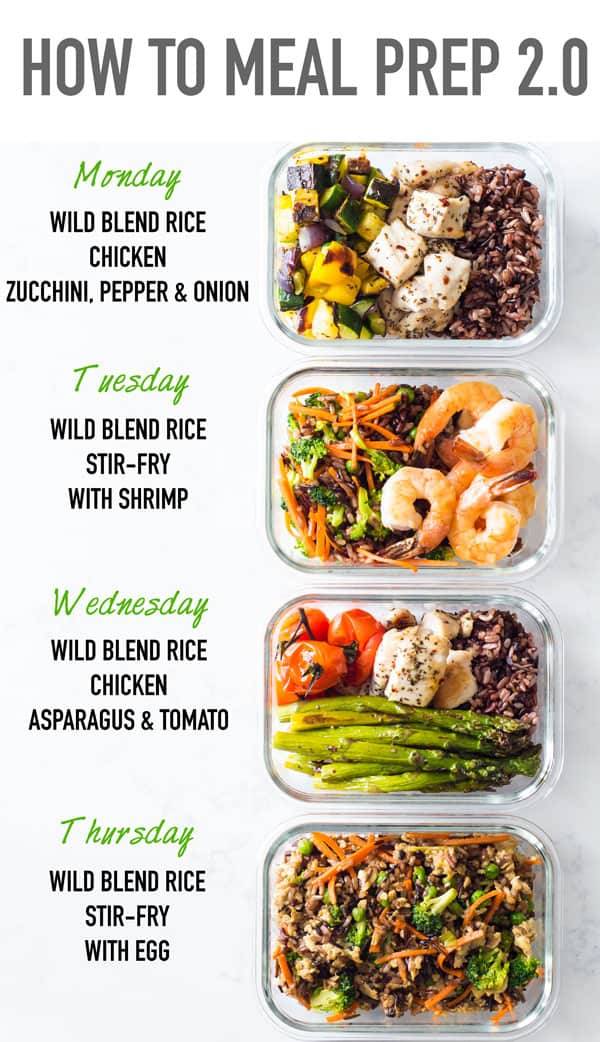Eating balanced meals is a powerful way to support your health and wellness. A balanced meal gives your body essential nutrients, helps keep blood sugar steady, and provides long-lasting energy, which makes you feel good throughout the day. But what exactly is a "balanced" meal, and how can you achieve it consistently?
A perfectly balanced meal includes the right mix of macronutrients (carbohydrates, proteins, and fats) and essential micronutrients (vitamins and minerals). Here’s a practical, step-by-step guide to building balanced meals that nourish your body and mind.
Step 1: Choose a Quality Protein Source
Protein is a key component of a balanced meal, providing the amino acids your body needs to repair tissues, build muscles, and produce essential hormones and enzymes. Protein also helps you feel full longer, which can reduce the urge to snack between meals.
Protein Options
Animal-Based: Lean meats like chicken breast, turkey, lean cuts of beef, fish (like salmon), and eggs are excellent choices. Fish offers omega-3s that support heart health.
Plant-Based: Lentils, chickpeas, beans, quinoa, tofu, tempeh, and edamame are great sources of plant-based protein.
Serving Size: Aim for around 20-30 grams of protein per meal—about the size of your palm.
Quick Tip: When on the go, choose protein-rich snacks like Greek yogurt, cottage cheese, or a handful of nuts.
Step 2: Add Complex Carbohydrates for Energy
Carbohydrates are the body’s main energy source, fueling both your brain and muscles. Choosing complex carbs ensures a steady release of energy and avoids blood sugar spikes.
Types of Complex Carbs
Whole Grains: Brown rice, quinoa, oats, barley, and whole-grain bread.
Starchy Vegetables: Sweet potatoes, carrots, and corn, which also add fiber and vitamins.
Serving Size: Fill about a quarter of your plate with complex carbs, about the size of your cupped hand.
Quick Tip: Mix cauliflower rice with regular rice or replace half of your pasta with zucchini noodles to lighten the carb load while keeping it nutritious.
Step 3: Include a Variety of Colorful Vegetables
Vegetables are loaded with fiber, vitamins, minerals, and antioxidants. A variety of vegetables adds nutrients and helps with digestion, making your meals nutrient-rich.
Types of Vegetables to Include
Leafy Greens: Spinach, kale, and arugula, which offer iron, calcium, and vitamin K.
Cruciferous: Broccoli, cauliflower, and Brussels sprouts, packed with fiber and antioxidants.
Colorful Options: Bell peppers, carrots, and tomatoes provide a range of vitamins, like A and C.
Serving Size: Fill half your plate with a mix of vegetables; one cup of cooked veggies or two cups of leafy greens is a good portion.
Quick Tip: Prepping veggies in advance or using frozen options can save time. Try roasting, stir-frying, or steaming for easy incorporation into meals.
Step 4: Add Healthy Fats for Flavor and Satiety
Healthy fats aid nutrient absorption, brain health, and hormone production, and they help keep you satisfied. Though calorie-dense, fats are essential when consumed wisely.
Types of Healthy Fats
Avocado: Provides creamy texture and heart-healthy monounsaturated fats.
Nuts and Seeds: Almonds, walnuts, chia seeds, and flaxseeds offer omega-3s and fiber.
Oils: Olive oil, avocado oil, and coconut oil are good for cooking and dressing salads.
Serving Size: Include about a tablespoon of fats per meal (or a thumb-sized portion).
Quick Tip: Drizzle olive oil on roasted vegetables, add chia seeds to smoothies, or top salads with nuts.
Step 5: Add Flavor and Hydration
Adding flavors like spices and herbs enhances taste and makes meals enjoyable. Hydration is also crucial for digestion and overall well-being.
Flavor Boosters
Herbs and Spices: Fresh basil, cilantro, or parsley, along with spices like turmeric and cumin, add flavor without calories.
Citrus and Vinegars: Lemon juice or balsamic vinegar brighten flavors and aid digestion.
Hydration: Drink a glass of water with each meal. You can also infuse water with cucumber, lemon, or mint for a calorie-free flavor boost.
Quick Tip: Keep a water bottle nearby to stay hydrated throughout the day.
Putting It All Together
To easily build balanced meals, remember:
1. Protein: Palm-sized portion of lean protein
2. Complex Carbs: Cupped handful of whole grains or starchy vegetables
3. Vegetables: Half your plate with colorful veggies
4. Healthy Fats: Thumb-sized portion of oils, nuts, or half an avocado
5. Flavor and Hydration: Add spices, herbs, and stay hydrated
Sample Balanced Meal
Protein: Grilled salmon (rich in omega-3s)
Complex Carb: Half a cup of quinoa
Vegetables: Mixed greens, cherry tomatoes, and steamed broccoli
Healthy Fat: Sliced avocado
Flavor: Olive oil drizzle with lemon juice, salt, and pepper
Balanced meals don’t have to be complicated. By following these steps, you can create nutrient-dense, satisfying meals that support long-term health. Enjoy experimenting with these principles to suit your tastes and lifestyle, knowing you're fueling your body with balance and intention.


